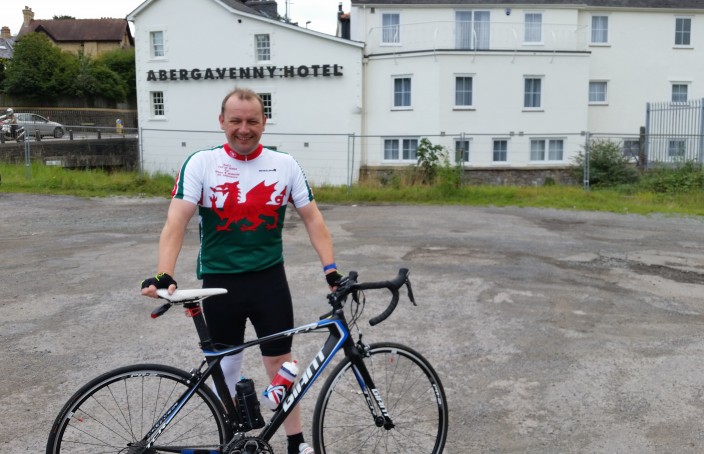Cycling across Wales over three days isn’t easy for anyone, but for Rod Evans, a 37-year-old type 1 diabetic, this journey is the latest in a long line of charity rides.
Rod cycled 250 miles between September 3 and September 5. His trek took him from the northern community of Aberegele to the southern town of Abergavenny. On days one and two, Rod rode for 90 miles, and then 70 miles on the final day.
“I knew that I was in for a rough ride,” Rod said, but his meticulous management of his type 1 meant he knew exactly what he was doing before, during and after the ride.
Rod was diagnosed with type 1 at the age of 18, but never let diabetes stop him from cycling or otherwise engaging in exercise.
“I’ve always been active, playing football during and after school. Also, I’ve cycled since the age of seven. The first charity ride I did was for the Royal British Legion in 2000 when I cycled 100 miles on a mountain bike. That was a great challenge. Since then, I’ve done eight more charity rides.”
Rod, who treats his type 1 with Humalog and Lantus injections, had trained for his tour of Wales for nine months. As well as assessing how he would manage his diabetes on the ride, he also managed to raise over £1,300 for Wales and Midlands Air Ambulance.
“I started training in late January. I soon found out that my blood sugar levels had to be in-between 8/9 mmol/l before training, otherwise I would be low in no time.
“When spring came along I started going out onto the road, doing 40 miles a night. I found my blood sugars were like a normal person’s, which was great, but as soon as I stopped training for a couple of days, my blood sugars went a little high, around 13 mmol/l. I found that I had to keep active or adjust my insulin, it was a real juggling act!”
Prior to his tour of Wales, Rod went on a three-day carbohydrate counting course at Wrexham Hospital, and this knowledge proved invaluable in working out how to keep his blood glucose levels under control during training, and the ride itself.
“I manage my diabetes by carb counting – and I took a lot of carbs with me {on the tour}, plus a good breakfast always helps. When cycling, you burn lots of carbs, so these are much better to eat.
“The amount of insulin I took would therefore depend on how many carbs I ate and the intensity of the training sessions that I would do.
“Every now and then I would stop on the side of the road to check my bloods. They weren’t bad and would be between 5.4 / 6.9. I also drank loads of water and ate quite a few bananas and nutty bars.”
Following exercise, vigilantly monitoring your blood glucose levels is essential if you are susceptible to hypoglycemia, as both highs and lows can be experienced. For Rod, though, this wasn’t much of an issue, as he was back riding within 24 hours of finishing the tour.
“I didn’t stop. I carried on riding my bike on my turbo trainer doing 10 to 30 miles a night. It all comes down to time and effort.”
Rod burnt 600 calories in just one day’s riding through Wales, and his ambition is only increasing. Next year, he plans to travel 300 miles across Britain, and is truly a testament that diabetes does not need to stop from you from chasing your dreams, no matter how ambitious they may seem.
*Rod’s medication practises were specifically tailored to himself only. If you are looking to get involved with high-intensity sports, such as cycling, you should consult your doctor to work out your own medication plan



